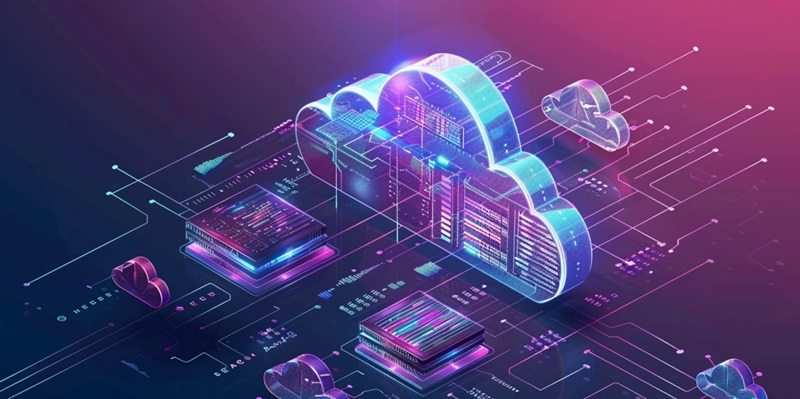The tech industry is witnessing a significant transformation as two of its giants, Microsoft and Google, recalibrate their workforce in pursuit of dominance in the cloud computing and AI sectors. This article will explore the strategies behind the recent layoffs, the areas of focus for both companies, and the implications for the industry.
Microsoft’s Strategic Layoffs and AI Focus
Microsoft Azure Job Cuts
In a move that shook the tech community, Microsoft announced sweeping job cuts across its Azure cloud computing division. Notably, teams such as Azure for Operators and Mission Engineering were hit hardest, with insider reports indicating that Azure for Operators alone saw up to 1,500 redundancies. On the heels of previous layoffs, including significant cuts at Activision Blizzard and Xbox, the eliminations point to a tightly focused strategic shift underway within the tech titan.
Shifting Priorities Within Microsoft
With an unflinching gaze fixed on future growth, Microsoft’s spokesperson has laid bare the rationale behind the layoff strategy. As they hone in on areas crucial to their customer and partner base, the company’s sights are clearly set on burgeoning opportunities within AI and cloud services. Despite the job cuts, Microsoft’s partnership with OpenAI—the creators of ChatGPT—and robust growth in the Azure sector underscore a deepening commitment to AI. This pivot is part of a broader agenda set by Jared Spataro, leading Microsoft’s ‘AI at Work’ initiative.
Microsoft Embraces AI with Copilot Products
Driven by Jared Spataro and the vision for ‘AI at Work,’ Microsoft is charting a new course in AI product development. The company is embracing the AI revolution with strategic leanings towards Copilot AI products. The decision aligns with broader industry trends, though it results in a workforce reduction, particularly within its Teams chat apps. Microsoft’s understanding of AI’s potential is leading to concentrated efforts where technology intersects with everyday productivity.
Google Cloud Division Restructuring
Workforce Trimming at Google Cloud
Google’s cloud division has experienced a parallel workforce trimming, despite the division’s financial successes. These cutbacks have pervaded various sectors such as sales, consulting, strategy, operations, and engineering. At least 100 roles have been confirmed as eliminated, a move that aligns with the tech behemoth’s own strategy of sculpting an efficient and focused team to navigate the competitive cloud services landscape.
Revenue Growth and Profitability Pressure
Fiscally, Google Cloud has been on an upward trajectory, showcasing a robust 28% year-over-year revenue increase and a noteworthy quadrupling of operating income. These figures not only reflect success but also unveil mounting pressure for even faster growth and higher profitability under the leadership of CEO Thomas Kurian. Achieving profitability has been a recent hallmark of Google Cloud, and these job cuts seem to be a calculated step in maintaining that momentum.
Preparing for a Competitive AI Landscape
In the face of an intensifying AI landscape, both Microsoft and Google’s job cuts represent strategic repositioning. Google’s CEO Sundar Pichai has hinted that the pace of job reductions might slow by the end of 2024, suggesting a recognition of the need for stability as they approach an increasingly AI-dominated horizon. This plays into a larger scheme where timely adjustments are essential for maintaining a competitive edge.
Industry-Wide Implications and Future Outlook
Tech Industry Workforce Realignment
These layoffs at Microsoft and Google are not occurring in isolation but are indicative of an industry-wide realignment. This restructuring symbolizes a shift in priorities, embracing the transformative power of AI and cloud technologies. The repercussions for the tech workforce are undeniably profound, yet the promise of emerging technology frontiers motivates this tactical, albeit disruptive, evolution.
Embracing AI and Cloud as the Future
The tech realm is currently undergoing a pivotal shift as Microsoft and Google, titans of the sector, realign their teams to spearhead innovation in cloud computing and AI. This shift is characterized by strategic workforce adjustments which are making headlines across the industry. In an effort to claim supremacy in these future-forward territories, both companies are scrutinizing their human resources, leading to notable layoffs. This piece delves into the tactical manoeuvres behind these industry-shaping decisions, pinpoints the key developmental areas where Microsoft and Google are channelling their energy, and discusses what these changes spell out for the tech landscape at large. As they forge ahead, the reverberations of their strategies are set to influence the trajectory of technology advancement and reshape the battleground of digital supremacy in the years to come.

